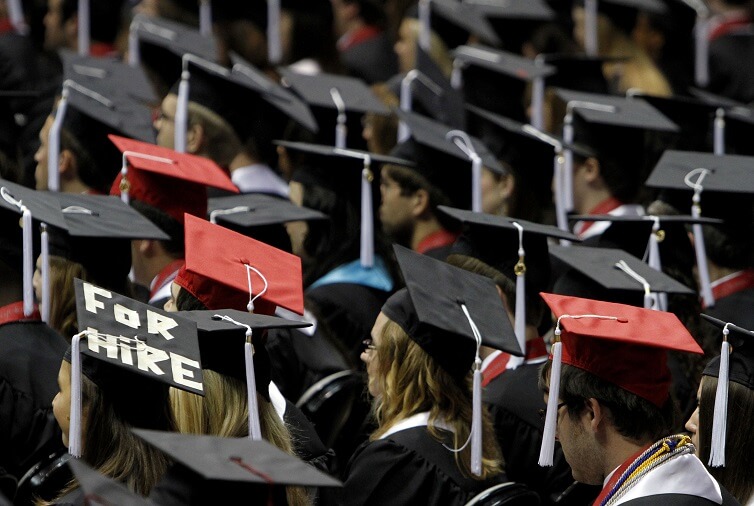The student loan crisis is fueled by a weak labor market

The student debt crisis in the United States continues to escalate. Over the past 17 years, the outstanding student loan balance has nearly quadrupled, reaching $1.4 trillion, and between 2000 and 2011 alone, default rates—the share of student loans more than 270 days overdue—doubled. The rise of the nontraditional borrower is the most common narrative to explain why student debt loads and defaults are surging. Yet this explanation, while important, isn’t the whole story. It turns out that the health of the labor market also could be to blame.
A new paper by New York University Stern School of Business economists Holger M. Mueller and Constantine Yannelis explores this labor-market dimension. The two researchers examine administrative data on individual borrowers’ student loans linked to deidentified tax records and zip-code level data on home prices drawn from online real estate company Zillow Group, Inc. Citing earlier research on the connection between drops in housing prices and local employment, Mueller and Yannelis investigate how massive declines in home prices during the Great Recession led to large drops in employment and corresponding rising student loan defaults over that same period.
The researchers find that falling home prices during the Great Recession were responsible for up to 32 percent of the growth in student loan defaults. What’s more, low-income borrowers appeared to be most sensitive to the change in home prices, probably because they faced the largest earning plunges, had the smallest savings cushions, and, as a result, may not have been able to continue repaying their loans.
Defaulting on student loans certainly is the worst-case scenario because these loans cannot be discharged through declaring bankruptcy, yet the state of the labor market can have other pernicious effects on young graduates with debt too. In the wake of the Great Recession, job-hopping significantly decreased, leaving several young workers (and college graduates) trapped in low-wage jobs with a duty to service their student debt instead of searching for new opportunities to grow their income. To make matters worse, even a typically high-paying college major didn’t guarantee high earnings post-graduation during the Great Recession. As a consequence, more and more college graduates have accepted jobs in low-paying industries or been underemployed, which ostensibly increases the burden of student debt and affects long-term economic well-being.
In order to deal with some of these consequences and reduce the risks of default on student loans, the federal government introduced the Income Based Repayment program in 2009. With the help of this program, eligible borrowers do not have to pay more than 15 percent of their discretionary income toward monthly student loan repayments and the length of the loan repayment period can increase up to 25 years. To test whether these programs were an effective insurance against student loan default, Mueller and Yannelis conducted additional analyses. They find that Income Based Repayment plans reduced not only the number of student loan defaults among eligible program enrollees but also their sensitivity to declines in home prices (and implicitly employment) during the Great Recession.
Though Income Based Repayment appears to be an effective option for mitigating the risk of student loan defaults—especially for low-income borrowers—it functions as a Band-Aid to a larger issue. As Mueller and Yannelis’s research shows, the progression of the student debt crisis is intrinsically tied to the health of the labor market. So, among a complementary set of solutions, a more robust labor market would ensure that college graduates can earn enough to pay back their student loans. Monetary policymakers and fiscal policymakers alike could help enact those measures.
